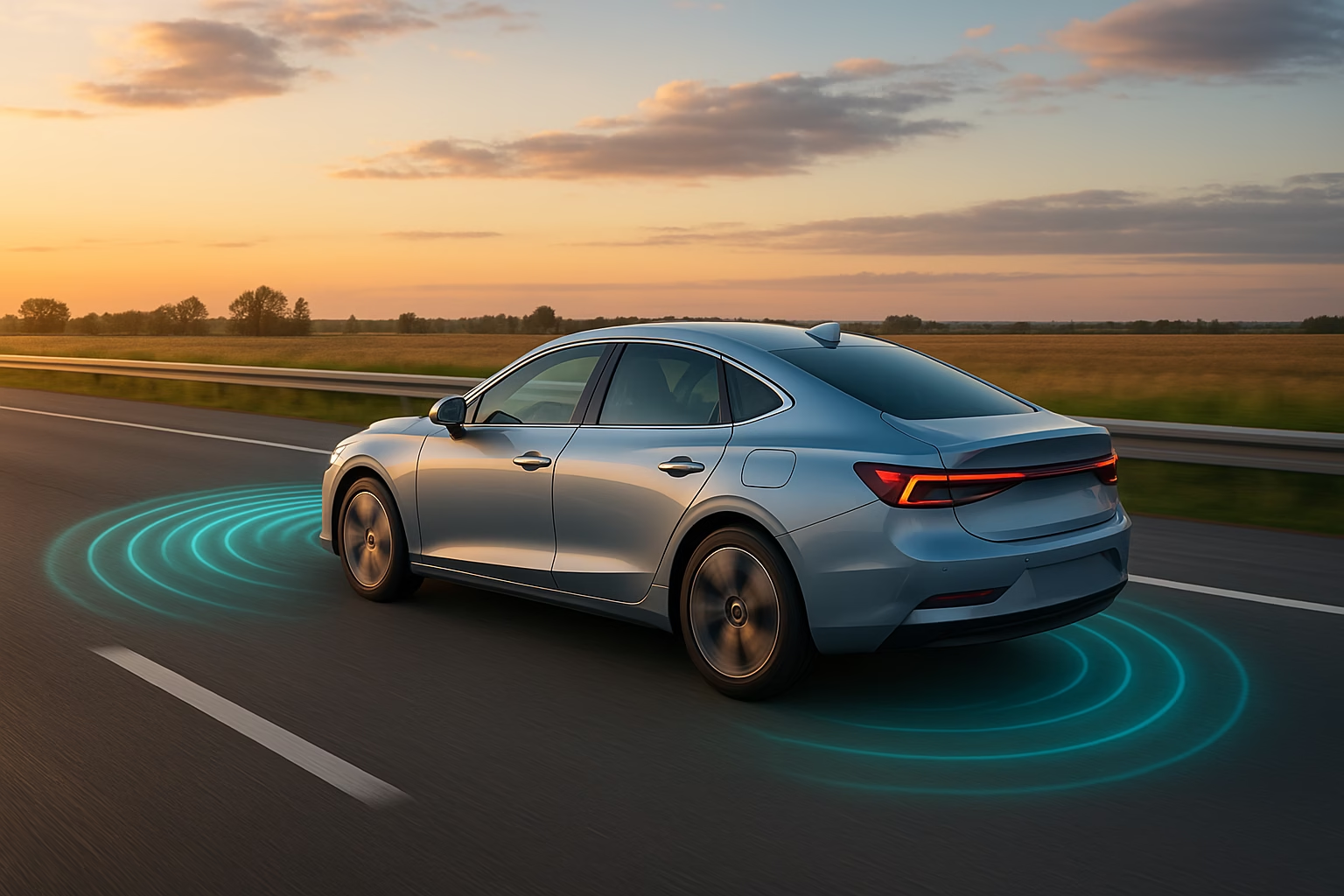As vehicles rolling off the factory floor become increasingly sophisticated, advanced driver assistance systems (ADAS) are no reserved for luxury models. According to industry research, 92.7% of new vehicles sold in the United States in 2018 already included at least one ADAS feature, and many automakers committed to making automatic emergency braking standard equipment by September 2022. Features such as adaptive cruise control, blind spot monitoring and forward collision warning are now common on affordable hatchbacks and family SUVs. Yet the technology is still evolving, and the vehicles you buy in the coming years will offer even more advanced assistance.
Sensor fusion and artificial intelligence
A key driver behind the next generation of driver assistance is improved sensor fusion. Today’s ADAS systems combine data from multiple sensors – cameras, radar, lidar and ultrasonic transducers – to build a 360 degree picture around the vehicle. Cameras detect lane markings, traffic signs and other vehicles; radar measures the distance and relative speed of objects; lidar creates a 3D map of the environment; and ultrasonic sensors aid with parking. Each sensor has strengths and limitations, but by fusing their data the system can make more accurate decisions. This sensor fusion process will become even more sophisticated as machine learning algorithms learn to classify and predict the behaviour of other road users. The Car ADAS Solutions blog notes that sensor fusion also provides redundancy: if one sensor fails, others can “pick up the slack” to maintain safe operation.
Autonomous driving researchers are also exploring vehicle‑to‑everything (V2X) communication, which allows cars to exchange information with each other, infrastructure and even pedestrians. By combining sensor data with V2X messages, future driver assistance systems will know about hazards beyond the line of sight, such as a stalled vehicle around a blind corner or a traffic light turning red. However, this shift requires significant advances in computing power to process large streams of data in real time and standards to ensure interoperability.
From Level 2 to hands‑free driving
Adaptive cruise control and lane centring assist already allow drivers to take their hands off the wheel briefly on well‑marked highways. In the next few years these functions will expand. General Motors’ Super Cruise and Ford’s BlueCruise packages permit hands‑free operation on mapped highways, using driver‑monitoring cameras to ensure the driver remains attentive. Some luxury brands are introducing Level 3 systems that can manage driving under specific conditions, such as slow‑moving traffic jams, while allowing the driver to take their eyes off the road. Despite marketing terms like “autopilot”, these systems are still considered driver assistance: they warn you of potential hazards or take limited action to avoid a crash, but they do not replace your attention.
For Australian drivers, these technologies will arrive gradually as regulatory approvals and local road mapping catch up. When hands‑free functions are available, always use them on approved roads and remain ready to take over. Remember that weather conditions, poor lane markings and heavy traffic can confuse cameras and radar. Our earlier article on “When Not to Use Adaptive Cruise Control” explains scenarios where it’s safer to drive manually. As features become more capable, learning how to test them in low‑stress environments and understanding their limits will remain important.
Smarter assistance features
Beyond highway cruising, future ADAS packages will add smarter features to help in everyday driving. Traffic jam assist will automatically steer, brake and accelerate in stop‑and‑go congestion. Intersection assist will monitor cross traffic and pedestrians when turning and can warn or brake if you attempt an unsafe turn. Automated lane‑change assist will check your blind spot, judge closing speeds and move the vehicle into the next lane when you tap the indicator. Parking systems will progress from self‑parking into tight spots to remote or “summon” functions that allow you to park the vehicle while standing outside.
On the safety front, more vehicles will come with driver‑monitoring cameras that watch for drowsiness or distraction and prompt the driver to take a break. Night vision cameras and augmented‑reality head‑up displays will highlight pedestrians and road hazards in low‑light conditions. Rear cross‑traffic braking may evolve to automatically stop if a cyclist or child runs behind your car. These innovations rely on the same foundational sensors used today, but they add processing power and software complexity. As features proliferate, the risk of misalignment or malfunction increases. After any windscreen replacement or minor accident, a calibration check is essential; misaligned sensors can cause systems to trigger unexpectedly or fail to intervene.
What this means for drivers
While the technology is exciting, drivers should view it as a helpful co‑pilot rather than a self‑driving chauffeur. Even as systems become more capable, they are still designed to assist you – they either warn you of an impending crash or take limited action to avoid one. You are responsible for monitoring the road and being prepared to take over at any time. To make the most of future features:
- Stay informed: Read the owner’s manual and explore your vehicle’s settings. Understanding how and when features operate will prevent surprises.
- Practise in safe environments: Before relying on a new feature in traffic, practise using it in an empty parking lot or quiet street. See our guide on how to safely test ADAS features for detailed tips.
- Keep sensors clean and calibrated: Dirt, mud and damaged windscreens can block cameras and radar, while wheel alignment changes can shift sensor angles. Book a professional calibration after windscreen replacement, suspension work or minor accidents to ensure systems remain accurate.
- Maintain situational awareness: Hands‑free systems monitor you with cameras; if you stop paying attention, they will disable assistance and hand control back to you. Resist the temptation to treat them as self‑driving.
Conclusion
The next generation of driver assistance will bring sophisticated sensor fusion, hands‑free highway driving, V2X communication and smarter features into everyday vehicles. These innovations promise to reduce crashes and make journeys more comfortable, but they also introduce new responsibilities. By learning how the technology works, practising in safe areas and ensuring sensors are calibrated after repairs, you can enjoy the benefits of tomorrow’s ADAS while staying in control. The future is exciting, but the driver’s seat will remain yours for years to come.

Hiran Alwis is an automotive lecturer and ADAS specialist with over 15 years of experience in diagnostics, advanced safety systems, and technical training. He founded ADAS Project to help everyday drivers and workshop technicians understand and safely use advanced driver assistance systems.
